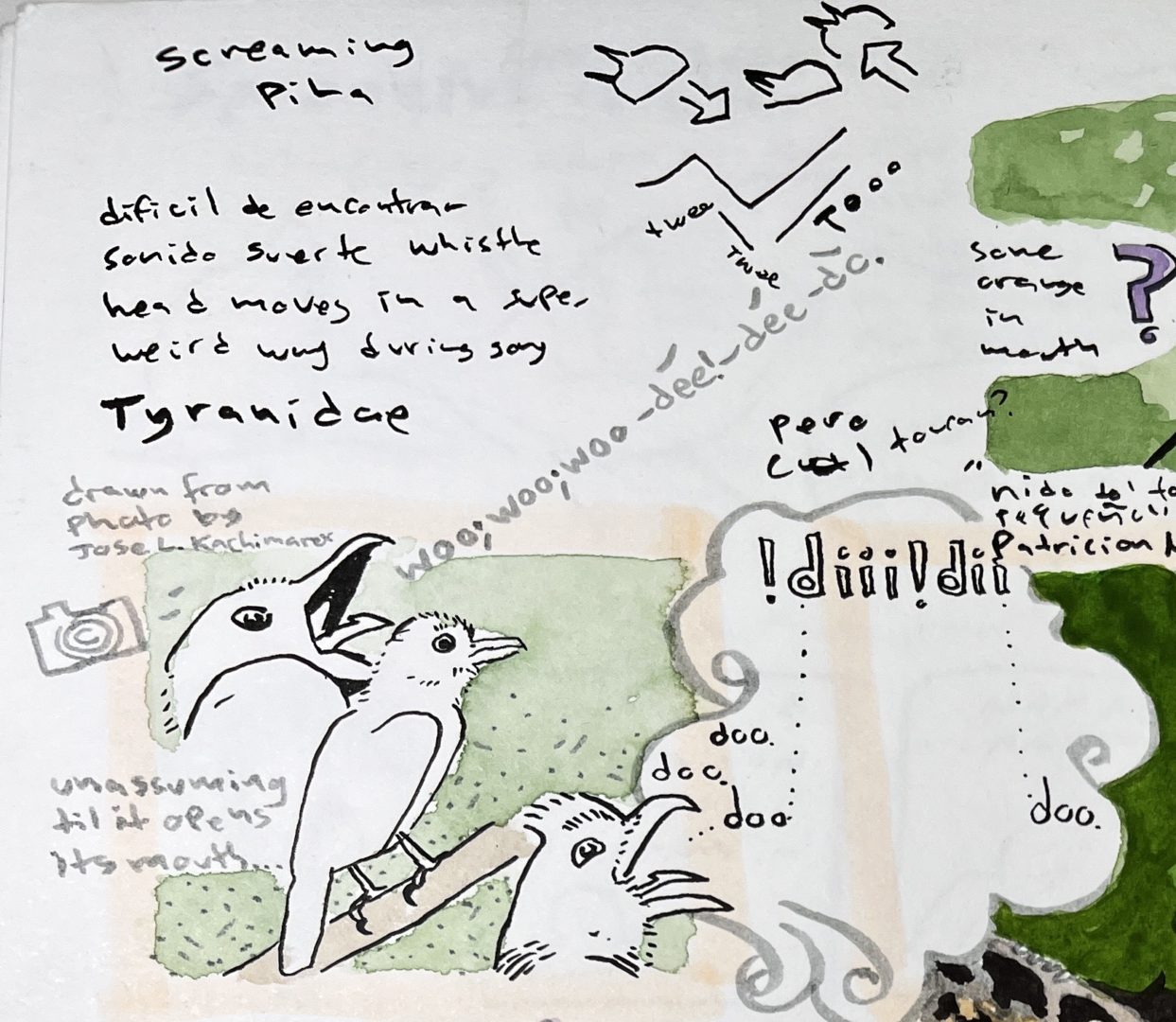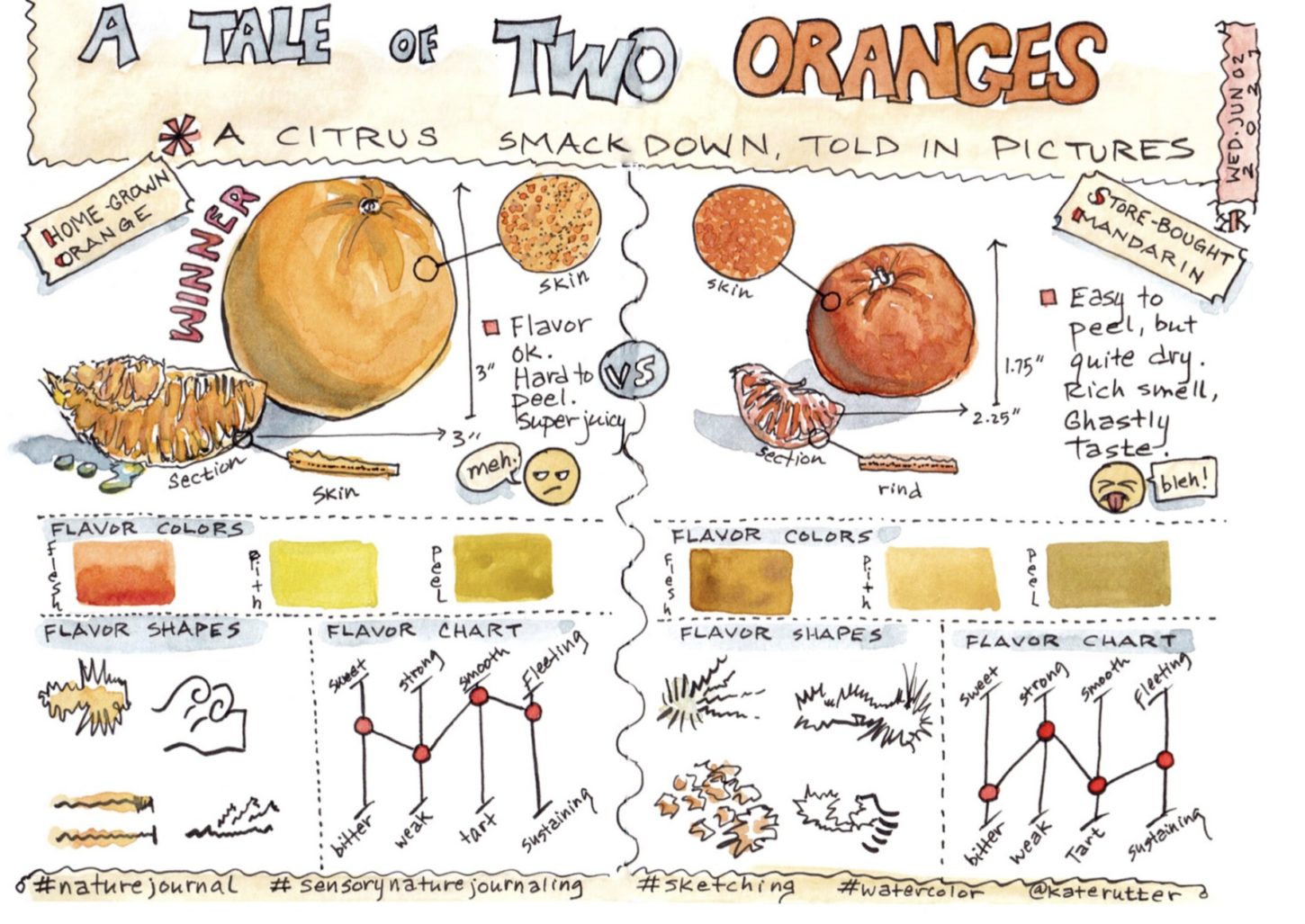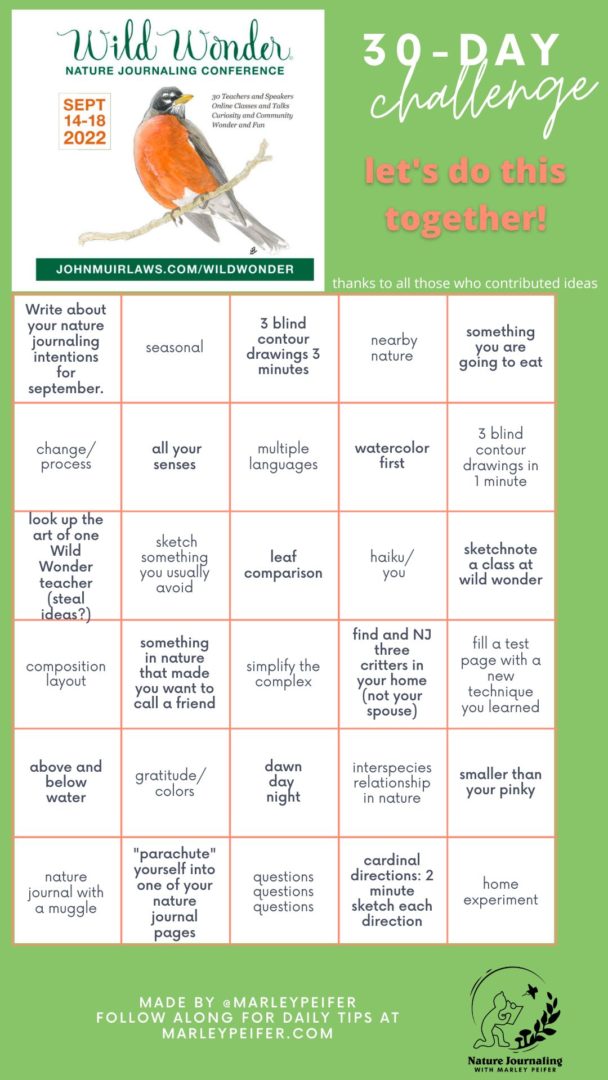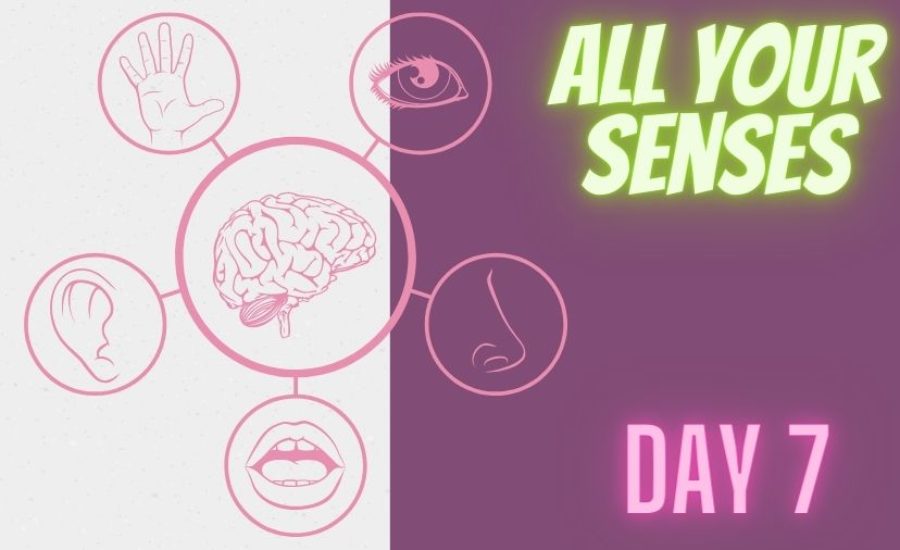Why is nature journaling usually 90% visual? What about the other senses?
Today’s Prompt: Nature Journaling all Your Senses
When you were in kindergarten you probably did an art activity intentionally using all your senses. Since then you probably haven’t done anything similar until you took Kate Rutter’s class at Wild Wonder last year. That was the case for me. Sure, I have done some wine and chocolate tastings, I have tried to include some bird song and other sounds in my nature journal. But for the most part my nature journal is dominated by my visual experiences of the environment.
What is Sensory Nature Journaling and why does it matter?
Sensory nature journaling means bringing more awareness to what senses dominate on our pages and trying to balance that out. It could be as simple as writing a few lines of the smells you noticed in the forest next to your landscapito drawing. The nature journaling community is way “over-indexed” on our visual sense as Kate Rutter explains. Sound comes in second but pretty far behind. Touch, smell, and taste barely show up. Despite what our pages show, our actual experience of nature is definitely multi-sensory. That means we are missing a lot of potential information. Importantly, it means our nature journals are showing a highly biased and incomplete picture of our connection with nature. This also has accessibility implications: what about vision impaired people or people who use their senses in different ways?
Luckily, Kate Rutter’s class at Wild Wonder 2021 was so thorough and thought-provoking that I don’t have to reinvent the wheel. In fact, she has made a lot of the material available online here.
I will borrow some ideas from her research for today’s prompt. But remember, try to keep it easy and fun.
Nature Journaling All Your Senses
- First, remember that words are going to be one of the main ways you describe your other senses in your nature journal.
- Second, you might want to refresh your vocabulary for the other senses. This will help you use words more effectively. Here is a pdf with helpful sensory attributes from Kate.
- You can create images, graphs, and diagrams to show your other senses visually. Check out the examples below showing sound by Marley and Smell by Kate Rutter.
- Finally, let yourself be experimental and keep in mind that all of these will have an element of subjectivity to them. The important thing is to find something that works for you and try to use it consistently over time. This way it will develop meaning for you. You will also learn through trying.


But what if I’m completely new to nature journaling?
Don’t worry, we got you right here. Below are links to some super resources for beginner nature journalers.
Are you just getting started with Nature Journaling?
Here are tips and motivation for beginners.
Where is the 30 day challenge?
If you missed the beginning you can still jump in now. Here is the complete guide.

If you want a PDF for printing: 30 Day Challenge Wild Wonder Nature Journaling
